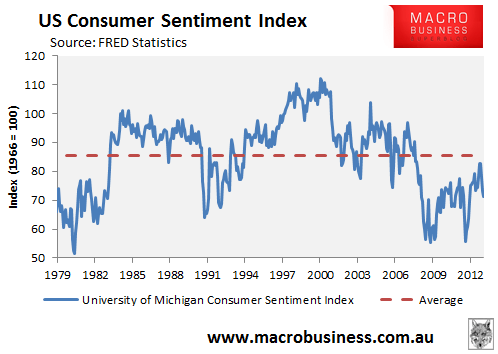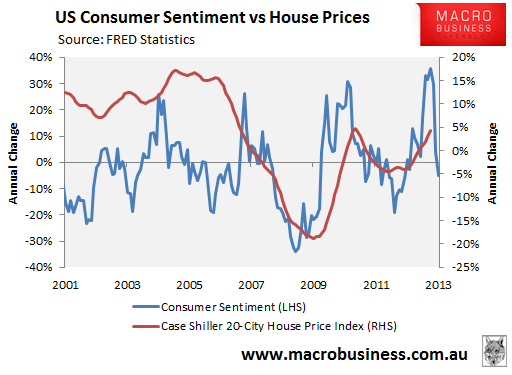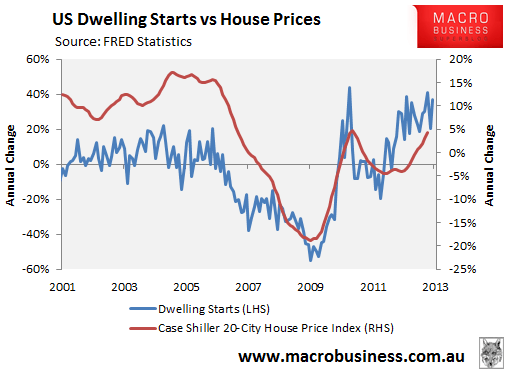
On Friday, I argued that the US housing market was experiencing a tentative recovery based on the fact that: 1) house prices had finally begun to increase, rising by 5% since their January 2012 lows; and 2) the number of dwelling starts in December rebounded to their highest level since June 2008.
Over the weekend, the University of Michigan Consumer Sentiment Index was released for January, which registered a preliminary fall in the index to 71.3, down from 72.9 in December. It was the second consecutive monthly fall in the index, with sentiment falling by -11.4 points since November 2012. It also represented the lowest consumer sentiment reading since December 2011 (see next chart).

The result is potentially important for the US housing market, since there appears to be a strong correlation between consumer sentiment and US house prices, with sentiment typically the leading indicator (see next chart).

While the relationship between consumer sentiment and housing starts is less clear, there does also appear to be a clear correlation between US house prices and housing starts (see next chart).

The sharp fall in US consumer sentiment between November and January appears to have been heavily influenced by the hoopla over the US Fiscal Cliff, which was largely averted when Congress struck a deal on 1 January, but left most Americans with less disposable income courtesy of the removal of the 2% payroll tax holiday.
However, with the deadline to raise the US debt ceiling now approaching fast (it is expected that the Federal Government could run out of funds by early March), and acrimonious congressional debate likely to ensue, there is the likelihood that consumer sentiment could take further hits over coming months, thereby threatening to halt the US housing recovery if the situation is not resolved promptly.

